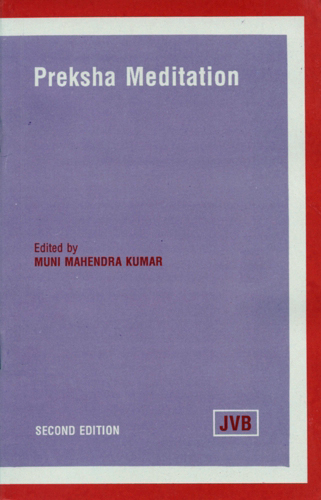Scientific Total Breathing
Normally breathing is automatic. That is, it does not need attention. But it is also amenable to voluntary control. If one so desires, one can even, without much practice, change and modify the rate, duration and depth of breathing.
Vital energy is essential for the step-by-step development of meditational practice. To generate enough energy, abundant oxygen must be supplied, and for this it is necessary to regulate the rate of breathing. Slow, deep and rhythmic breathing qualifies to become the object of perception.
Increase in the rate of breathing makes it shallow, spasmodic, and some time gasping. It affects the vital energy adversely and ultimately has injurious effects on health.
The lungs themselves have no muscles and hence play only a passive role in breathing. The mechanical power required for the process of breathing is supplied by (a) the raising and lowering of diaphragm, (b) the contraction and expansion of intercostal muscles, and (c) raising and lowering of upper part of the thorax called clavicle or collarbone.
The vital capacity of our lungs is nearly 6 litres, but the average volume of air taken in a single breath is 1/2 to 1 litre. With proper attention this volume may be increased upto 4 to 5 litres. In other words careful reorientation of our breathing system can increase at least fivefold our ability to use oxygen and eliminate carbon dioxide.
Each and everyone of the billions of cells which constitute the body is permeated by the spiritual self, and that is why each cell is sensitive and capable of carrying out metabolic function through biochemical and bioelectric actions.
In the body various systems are functioning continually. The heart beats, the blood circulates, oxygen fills the lungs and is carried inside by the haemoglobin in the blood; all organs are active; the whole organism throbs with activity. The machinery of the organism works incessantly like a colossal factory. Every minute innumerable phenomena occur, thousands of chemical reactions take place, millions of old red blood cells are destroyed and new ones are created, but one is completely unaware of all these. He is blissfully ignorant of what goes on inside (his body). The reason of unawareness is that most of the functions are automatic, i.e., do not involve the conscious mind. Only a deliberate concentration of internal perception can give an idea of the colossal activity within. And there is a high degree of automatization which filters out most of the sensations from being perceived. The instrument of perception has thus been blunted and is unable to detect subtle sensations. A process of deautomatization by a deliberate concentration and focussing of the attention can sharpen this instrument to some extent to enable it to get an idea of the colossal activity inside. Be aware of the tremendous activities of various organs, such as subtle movements inside due to the flow of the vital energy; chemical reactions due to metabolic functions; electrical impulses being transmitted from nerve to nerve; every moment various body mechanisms have to react to the continual changes in the external environment - heat and cold, humidity and dryness - a dynamic equilibrium is maintained by continual adjustments of body fluids, food materials are torn down into simpler units or oxidized to release the energy: biochemical and bio-electrical phenomena take place continually. All these are to be perceived and be aware of.
Once the conscious mind is withdrawn from the exterior surroundings, and turns inwards, it is comparatively free from the emotions of likes and dislikes, and is therefore calm. Such a state of mind can reach cellular levels within the body. Cellular organisation is benefited by direct communication with the conscious mind. When the attention is wandering externally, cellular organisation functions subconsciously without the benefit of the physical supervision. With the supervision of the conscious mind, the cells function more efficiently. Regular practice of perception of body by well-trained mind enhances cellular consciousness and a high degree of self-awareness is achieved.
 Prof. Muni Mahendra Kumar
Prof. Muni Mahendra Kumar

